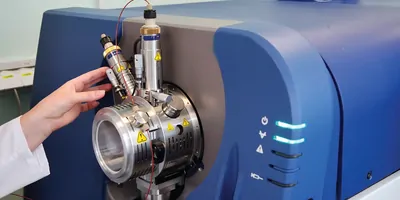When one thinks of the safety hazards of laboratory equipment, they may recall the horror stories of unbalanced rotors destroying an ultracentrifuge or fingers getting snagged in the gears of a robotic arm. But analytical equipment with zero moving parts can pose risks as well, albeit such hazards aren’t typically so severe, which makes them easy to overlook. Here are a few ways you can proactively address some potential safety issues that may arise in your lab’s instruments.
1. Dedicate time to reviewing instrument service logs
With all the competing priorities that you have as a lab manager, it can be easy to overlook something as simple as reviewing your instruments’ service logs. Be careful not to ignore them for too long, however. Reviewing your maintenance logs allows you to be confident that all your lab’s equipment is being serviced and calibrated regularly, which goes a long way in preventing both inaccurate analyses and hazardous malfunctions.
Repair logs should not be neglected, either. These documents may reveal trends that can help you foresee problems on the horizon. Dan Scungio, a laboratory safety consultant, recommends looking specifically for more frequent additions to an instrument’s repair log. If the log is being updated more often as time goes on, it could indicate that the instrument is approaching its end of life and could develop more severe issues—some of which may potentially hurt you or your staff.
To ensure you do not forget to review your instrument logs, try scheduling a recurring reminder on your phone or digital calendar.
2. Consider ergonomics
Our understanding of ergonomic design has improved considerably over the years. The past decade alone has seen a surge of interest in the subject, and manufacturers have capitalized on this interest by releasing ergonomics-focused versions of everyday tech like computer keyboards.
These advancements have carried over to laboratory equipment as well. For instance, some modern cryostat microtomes now have motorized height adjustment to properly accommodate users of any height. Additionally, many analytical devices have angle-adjustable touchscreens that allow for more comfortable operation. Thanks to these improvements, lab technicians won't be as prone to developing repetitive strain injuries as they operate this equipment day in and day out.
Unfortunately, countless laboratories are still relying on decades-old analyzers that do not offer decent ergonomics. In such cases, lab managers can find ways to adapt the instrument for more ergonomic usage. For example, analyzers driven by a computer and software could be outfitted with a higher-resolution display to minimize eye strain, mounting that display on a height-adjustable VESA mount, and adding an ergonomic keyboard and mouse.
3. Establish a regular instrument replacement program
While not an option for every facility due to budget constraints, it is ideal if you are able to replace your analytical equipment consistently. Not only will this minimize repair downtime, but it will allow you to have greater confidence in the accuracy of your instruments. After all, compromised data can also be a danger. While bad data can't pose a physical risk, it can adversely affect processes downstream. A diagnosis formed on bad data could negatively influence a patient’s treatment plan and manifest health risks.












